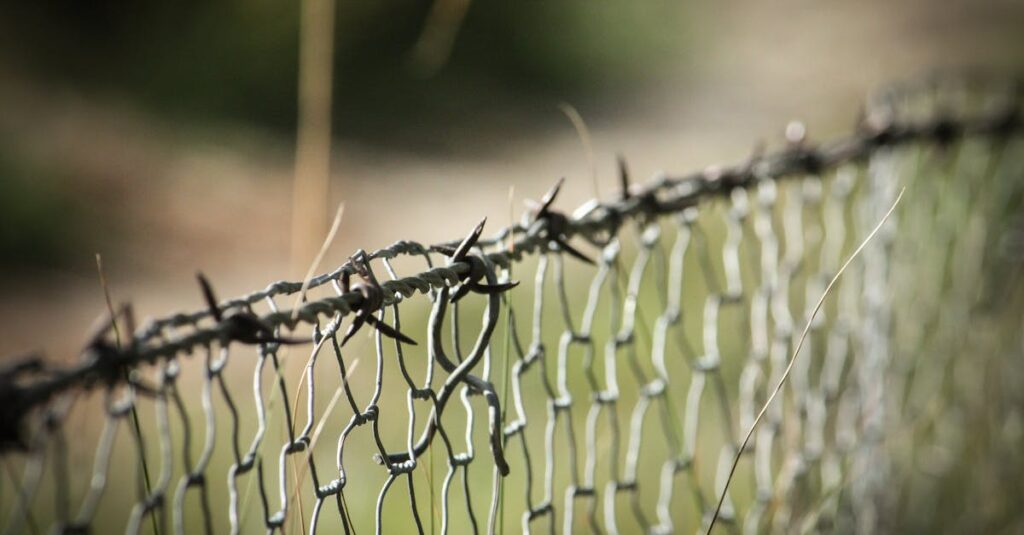Table of Contents
ToggleNavigating property line disputes can feel like stepping into a real-life game of tug-of-war, where the stakes are high and the neighbors are armed with measuring tapes. When it comes to boundaries, misunderstandings can lead to more than just a few awkward encounters over the fence. They can spark conflicts that escalate faster than a squirrel on a caffeine binge.
Understanding Property Line Dispute Policy
Property line disputes arise from unclear boundaries between neighboring properties. Addressing these misunderstandings promptly can prevent escalation into significant conflicts.
Definition of Property Line Dispute
A property line dispute occurs when two or more parties disagree on the demarcation of their respective land boundaries. This disagreement often involves existing structures, fencing, trees, or landscaping that encroach on a boundary. Neighboring property owners may find it difficult to visualize the exact property lines, leading to confusion. Legal definitions may differ by jurisdiction, increasing the complexity of the situation. Clarity regarding property lines reduces the potential for friction between neighbors.
Common Causes of Disputes
Various factors contribute to property line disputes. Miscommunication often leads to misunderstandings about where boundaries lie. Inaccurate surveys or outdated property records can also fuel confusion. Natural landmarks, like trees or fences, may shift over time, creating uncertainty. Changes in land use, such as new constructions or renovations, can further complicate situations. Ignorance of local property laws and regulations often exacerbates disputes. Neighbors may overlook or disregard established boundaries, resulting in conflicts that necessitate resolution.
Legal Framework
Understanding the legal framework surrounding property line disputes is vital. It encompasses relevant laws and regulations that clarify property boundaries and guide conflict resolution.
Relevant Laws and Regulations
State laws govern property boundaries. These often include statutes that detail how to determine property lines, such as those specifying survey requirements. Legal principles like adverse possession can affect ownership rights too. Courts interpret these laws when determining disputes, particularly in cases involving surveys or perceived encroachments. Plat maps and recorded deeds serve as critical documents in establishing existing boundaries. Seeking clarity on applicable laws can help property owners understand their rights and responsibilities in boundary disputes.
Role of Local Authorities
Local authorities play a key role in mediating property line disputes. Tribunals or zoning boards address boundary conflicts by providing a platform for both parties to present their cases. Within municipalities, planning departments maintain official maps and property records, offering essential context for disputes. Local surveyors can assist in clarifying boundaries through professional assessments or reaffirmations of lines. Knowledge of local ordinances can help residents understand their options for resolving disputes effectively. Accessing these resources ensures an informed approach to property line disagreements.
Steps to Resolve Property Line Disputes
Resolving property line disputes involves a structured approach to communication and conflict management. Clear steps can help prevent escalation and promote mutual understanding.
Initial Communication
Start with a calm discussion between neighbors. Sharing documentation such as surveys or deeds can clarify misunderstandings. Agreement on boundary lines benefits both parties. If direct communication proves challenging, consider inviting a neutral third party. Often, an informal chat can ease tensions and lay the groundwork for further discussions. Documenting all interactions helps maintain clarity in ongoing communication. Setting a time to revisit the conversation can also keep the momentum alive.
Mediation and Arbitration
Engaging a mediator often proves effective for more complex disputes. A trained mediator helps facilitate conversation and negotiation. Their goal is to ensure both parties understand each other’s perspectives. Mediation encourages creative solutions while maintaining a cooperative atmosphere. If mediation fails, arbitration might be the next step. An arbitrator hears both sides and provides a binding decision. This method typically resolves disputes more quickly than litigation. Identifying and agreeing on an arbitrator can streamline the process. Both avenues ensure that resolution remains focused, promoting neighborly relations.
Best Practices for Homeowners
Homeowners can take specific steps to prevent or resolve property line disputes efficiently. Understanding key practices may lead to better neighborly relationships and clarity in property ownership.
Documentation and Surveys
Maintaining accurate documentation is crucial. Property owners must keep updated surveys and deeds on hand to establish boundaries clearly. These documents can resolve misunderstandings quickly, so asking a licensed surveyor to conduct an official survey helps provide a definitive outline of property lines. Records should include information on any changes made to the property and updates related to local land use laws and developments. Keeping all documentation organized enables homeowners to reference it easily during discussions with neighbors or during legal proceedings if necessary.
Seeking Professional Advice
Seeking professional advice can clarify complicated property line situations. Consultation with legal experts specializing in property law can provide essential insight into local laws governing boundary disputes. When property lines are unclear, a land use attorney can review documents and offer guidance on the best method for resolution. Engaging a mediator may also facilitate conversations between neighbors, providing a neutral space for discussion. These professionals can help negotiate solutions that align with all parties’ interests, reducing the chance of escalation into more severe disputes.
Navigating property line disputes requires a blend of understanding and proactive communication. By staying informed about local laws and maintaining accurate documentation homeowners can significantly reduce the likelihood of conflicts. When disagreements arise addressing them early through open dialogue or mediation can prevent escalation. Utilizing professional resources like surveyors and legal experts further enhances the chances of reaching a satisfactory resolution. Prioritizing neighborly relations and mutual respect ultimately fosters a harmonious living environment, making it easier to manage any future boundary concerns.







